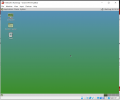Hi, I’m brand new to both FreeBSD and DWM.
I’ve tried for a few days now to set up DWM but I can’t seem to get it figured out. I’ve installed xorg and I can get xterm to open, but I can’t get dwm to do anything as it outputs a display error (cannot open display) every time I try to launch it.
Do most Linux guides also apply to using dwm in FreeBSD?
As I’ve said, I’m new to both BSD and DWM and I’m not sure what guides I can reliably follow.
Thanks ahead of time, sorry of this is a redundant thread.
I’ve tried for a few days now to set up DWM but I can’t seem to get it figured out. I’ve installed xorg and I can get xterm to open, but I can’t get dwm to do anything as it outputs a display error (cannot open display) every time I try to launch it.
Do most Linux guides also apply to using dwm in FreeBSD?
As I’ve said, I’m new to both BSD and DWM and I’m not sure what guides I can reliably follow.
Thanks ahead of time, sorry of this is a redundant thread.

